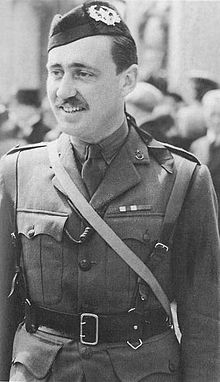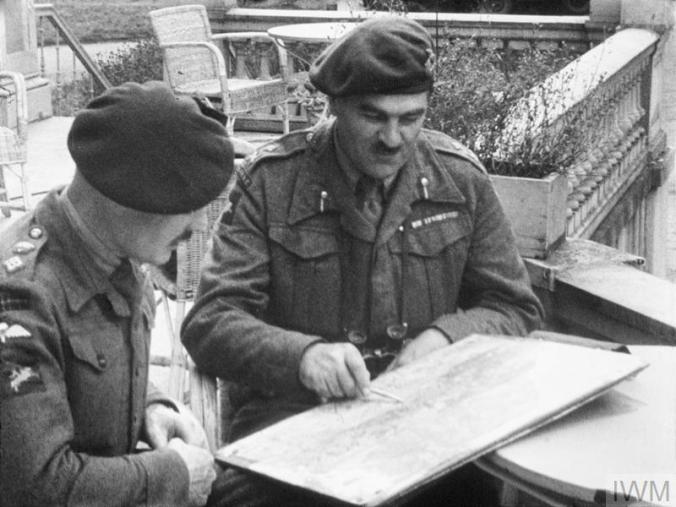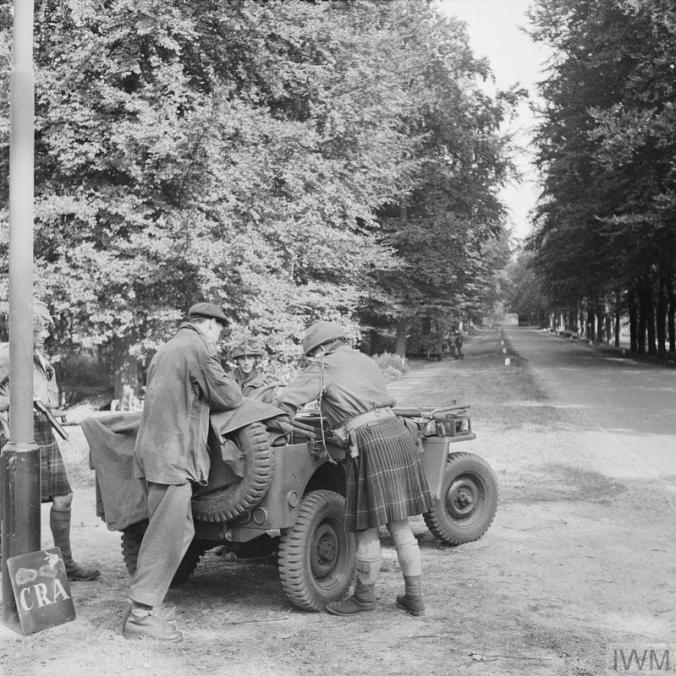Recently, my reenacting unit, the British 1st Airborne Division Living History Association, was invited to set up an educational display at a Scottish Highland Games event. I wrote the following as a handout.
Traditionally, Infantry Regiments in the British Army were based geographically. English Regiments were based on the county system, such as the Gloucestershire Regiment and the Cheshire Regiment. Most Highland Regiments were based on the ancient clans, such as the Cameron Highlanders and Gordon Highlanders, and again, each had a designated geographic recruitment area. Even the larger formations were based geographically, such as the 50th Northumbrian “Tyne and Tees” Division and the famous 51st Highland Division.
By contrast, when Britain’s Airborne Forces were first created in 1940, they were not restricted by such traditions. 1st through 4th Parachute Battalions recruited from all across Great Britain, but it was quickly discovered that the toughest and bravest paratroopers were Scotsmen. Later Parachute Battalions were converted from existing infantry units, including 5th (Scottish) Parachute Battalion, which had previously been the 7th Battalion, Queen’s Own Cameron Highlanders.
As an experiment, an entire Company was made up of Scotsmen: C Company, 2nd Parachute Battalion, nicknamed “Jock Company”. Naturally, a Scottish officer was needed to command the Company, and Major John Dutton Frost, originally of the Cameronians (Scottish Rifles) was selected. Jock Company conducted Britain’s first major airborne action in February, 1942: a raid against a German radar installation at Bruneval in occupied France. Frost was then promoted to Lieutenant-Colonel and given command of 2nd Parachute Battalion.

Lt.-Col. John D. Frost in the uniform of the Cameronians (Scottish Rifles)
1st Parachute Brigade (1st, 2nd and 3rd Parachute Battalions) was sent to North Africa in November, 1942, and was in nearly constant action through March, 1943. Back in Britain, the Airborne Forces continued to grow, and 1st Airborne Division was created.
In addition to paratroops, it was decided to train troops to deploy from gliders; these “air-landing” units took existing infantry battalions and converted them to the glider role.
1st Air-Landing Brigade consisted of one Scottish and two English battalions, as follows:
- 1st Battalion, The Border Regiment;
- 2nd Battalion, The South Staffordshire Regiment;
- 7th Battalion, Kings Own Scottish Borderers (K.O.S.B.).
1st Air-Landing Brigade first saw action supporting the Invasion of Sicily in July, 1943; 1st Parachute Brigade was then utilized during the breakout from the beachhead.
In September, 1943, elements of 1st Airborne landed in mainland Italy, and the divisional commander, Major-General George Hopkinson, was killed in action. His replacement was Major-General Robert “Roy” Urquhart, originally of the Highland Light Infantry. When Urquhart took command, he appointed Lieutenant-Colonel Charles Mackenzie as his Chief of Staff; Mackenzie had previously commanded 5th (Scottish) Parachute Battalion.

Maj.-Gen. “Roy” Urquhart with his Chief of Staff, Lt.-Col. Charles Mackenzie, at Divisional Headquarters during the Battle of Arnhem. Photo courtesy of the Imperial War Museum (FLM 1208).
Urquhart commanded 1st Airborne during the epic Battle of Arnhem in September, 1944. Lt.-Col. Frost and his 2nd Battalion captured the north end of Arnhem Bridge, the Division’s main objective. However, the Division was surrounded, outnumbered and outgunned, and their relieving force never arrived. 7th K.O.S.B. was instrumental in holding the division’s defensive perimeter, but the survivors of the Division were forced back across the Rhine.
The Battle of Arnhem is remembered as one of Britain’s greatest feats of arms, and was famously depicted in the film, “A Bridge Too Far”.
Sources
By Air to Battle: The Official Account of the British First and Sixth Airborne Divisions
His Majesty’s Stationary Office, 1945
Harclerode, Peter
Para! Fifty Years of the Parachute Regiment
Arms & Armour Press, A Cassell Imprint, 1992
Reprinted by Brockhampton Press, Hodder Headline PLC Group, 1999
Peatling, Robert
Without Tradition: 2 Para 1941- 1945
Pen & Sword Books, Ltd., 1994

Capt. James Ogilvie of D Squadron, No. 1 Wing, Glider Pilot Regiment, who famously wore his kilt to fly to Arnhem. Ogilvie served in the Gordon Highlanders prior to volunteering as a Glider Pilot. Photo from the Imperial War Museum (BU 1145).